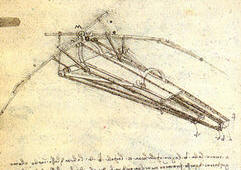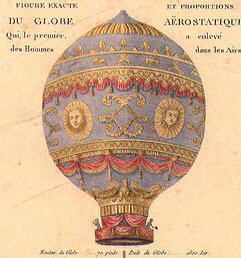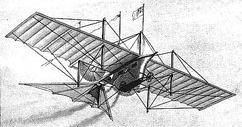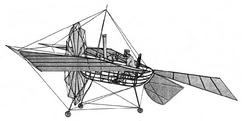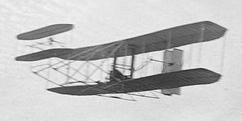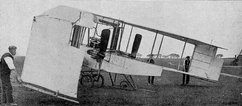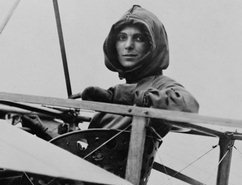WORLD'S ALL INVENTIONS

1955—TV REMOTE CONTROL
It marks the official end of humanity's struggle for survival and the beginning of its quest for a really relaxing afternoon. The first wireless remote, designed by Zenith's Eugene Polley, is essentially a flashlight. When Zenith discovers that direct sunlight also can change channels on the remote-receptive TVs, the company comes out with a model that uses ultrasound; it lasts into the 1980s, to the chagrin of many a family dog. The industry then switches to infrared.
1955—MICROWAVE OVEN
In 1945 Raytheon's Percy Spencer stands in front of a magnetron (the power tube of radar) and feels a candy bar start to melt in his pocket: He is intrigued. When he places popcorn kernels in front of the magnetron, the kernels explode all over the lab. Ten years later Spencer patents a "radar range" that cooks with high-frequency radio waves; that same year, the Tappan Stove Co. introduces the first home microwave model.
1957—BIRTH-CONTROL PILL
Enovid, a drug the FDA approves for menstrual disorders, comes with a warning: The mixture of synthetic progesterone and estrogen also prevents ovulation. Two years later, more than half a million American women are taking Enovid—and not all of them have cramps. In 1960 the FDA approves Enovid for use as the first oral contraceptive.
1958—JET AIRLINER
The Boeing 707-120 debuts as the world's first successful commercial jet airliner, ushering in the era of accessible mass air travel. The four-engine plane carries 181 passengers and cruises at 600 mph for up to 5280 miles on a full tank. The first commercial jet flight takes off from New York and lands in Paris; domestic service soon connects New York and Los Angeles.
1959—FLOAT GLASS
There's a reason old windowpanes distort everything: They were made by rapidly squeezing a sheet of red-hot glass between two hot rollers, which produced a cheap but uneven pane. British engineer Alastair Pilkington revolutionizes the process by floating molten glass on a bath of molten tin—by nature, completely flat. The first factory to produce usable float glass opens in 1959; an estimated 90 percent of plate glass is still produced this way.
1961—CORDLESS TOOLS
Black and Decker releases its first cordless drill, but designers can't coax more than 20 watts from its NiCd batteries. Instead, they strive for efficiency, modifying gear ratios and using better materials. The revolutionary result puts new power in the hands of DIYers and—thanks to a NASA contract—the gloves of astronauts.
1961—INDUSTRIAL ROBOT
The Unimate, the first programmable industrial robot, is installed on a General Motors assembly line in New Jersey. Conceived by George C. Devol Jr. to move and fetch things, the invention gets a lukewarm reception in the United States. Japanese manufacturers love it and, after licensing the design in 1968, go on to dominate the global market for industrial robots.
1962—COMMUNICATIONS SATELLITE
Telstar is launched as the first "active" communications satellite—active as in amplifying and retransmitting incoming signals, rather than passively bouncing them back to Earth. Telstar makes real a 1945 concept by science fiction author Arthur C. Clarke, who envisioned a global communications network based on geosynchronous satellites. Two weeks after Telstar's debut, President Kennedy holds a press conference in Washington, D.C., that is broadcast live across the Atlantic.
1962—LED
Working as a consultant for General Electric, Nick Holonyak develops the light-emitting diode (LED), which provides a simple and inexpensive way for computers to convey information. From their humble beginnings in portable calculators, LEDs spread from the red light that indicates coffee is brewing to the 290-ft.-tall Reuters billboard in Times Square.
1964—UNMANNED AERIAL VEHICLES
Widespread use of remotely piloted aircraft begins during the Vietnam War with deployment of 1000 AQM-34 Ryan Firebees. The first model of these 29-ft.-long planes was developed in just 90 days in 1962. AQM-34s go on to fly more than 34,000 surveillance missions. Their success leads to the eventual development of the Unmanned Aerial Vehicles widely used today.
STATS

1962/VIDEO GAMES MIT programmers write Spacewar; 43 years later 89 percent of school-age kids own video games. 1955/POLIO VACCINE The year Jonas Salk finds a way to prevent polio, there are 28,985 global cases; by 2005, the number drops to 1200. 1957/THREE-POINT SEATBELT According to the U.S. Department of Transportation, more than 15,000 American lives are saved in 2005 by Nils Bohlin's device.
The first general-purpose computer, the nearly 30-ton ENIAC (1947), contains 18,000 vacuum tubes, 70,000 resistors and 10,000 capacitors. In 1959, the INTEGRATED CIRCUIT puts those innards on one tiny chip. Before the entire world is networked, there is the ARPANET—four computers linked in1969. It introduces the concept of "packet switching," which simultaneously delivers messages as short units and reassembles them at their destination. The Apple II, Commodore Pet and Radio Shack's TRS-80 are introduced in 1977—four years before IBM, soon to become synonymous with the term "PC," unveils its PERSONAL COMPUTER. In 1989, Sir Tim Berners-Lee creates "hypertext markup language" (HTML) to make Web pages and the "Uniform Resource Locator" (URL) to identify where information is stored. These breakthroughs form the foundation of the WORLD WIDE WEB.
1964—MUSIC SYNTHESIZER
Robert Moog develops the first electronic synthesizer to make the leap from machine to musical instrument. Moog's device not only generates better sounds than other synthesizers, it can be controlled by a keyboard rather than by punch cards. The subsequent acceptance of electronic music is a crucial step in developing audio technology for computers, cellphones and stereos.
1966—HIGH-YIELD RICE
The International Rice Research Institute in the Philippines releases a semi-dwarf, high-yield Indica variety that, in conjunction with high-yield wheat, ushers in the Green Revolution. Indica rice thrives in tropical regions of Asia and South America, raising worldwide production more than 20 percent by 1970.
1969—SMOKE DETECTOR
Randolph Smith and Kenneth House patent a battery-powered smoke detector for home use. Later models rely on perhaps the cheapest nuclear technology you can own: a chunk of americium-241. The element's radioactive particles generate a small electric current. If smoke enters the chamber it disrupts the current, triggering an alarm.
1969—CHARGE-COUPLED DEVICE
Bell Labs' George Smith and Willard Boyle invent a charge-coupled device (CCD) that can measure light arriving at a rate of just one photon per minute. Smith and Boyle's apparatus allows extremely faint images to be recorded, which is very useful in astronomy. Today, its most noticeable impact is in digital cameras, which rely on CCD arrays containing millions of pixels.
1970—DIGITAL MUSIC
James Russell, a scientist with the Pacific Northwest National Laboratory, invents the first digital-to-optical recording and playback system, in which sounds are represented by a string of 0s and 1s and a laser reads the binary patterns etched on a photosensitive platter. Russell isn't able to convince the music industry to adopt his invention, but 20 years later, Time Warner and other CD manufacturers pay a $30 million patent infringement settlement to Russell's former employer, the Optical Recording Co.
1971—WAFFLE-SOLE RUNNING SHOES
Bill Bowerman, the track coach at the University of Oregon, sacrifices breakfast for peak performance when he pours rubber into his wife's waffle iron, forming lightweight soles for his athletes' running shoes. Three years later, Bowerman's company, Nike, introduces the Waffle Trainer, which is an instant hit.
IN THEIR WORDS
1962 Computer Mouse
"I don't know why we call it a mouse. It started that way, and we never changed it." —Doug Engelbart, engineer, Stanford Research Institute, 1968
1969 Automated Teller Machine
"On Sept. 2, our bank will open at 9:00 and never close again!" —Long Island branch of Chemical Bank, advertisement from 1969
1973 Cellphone
"Joel, I'm calling you from a real cellular phone." —Martin Cooper, leader of Motorola's cellphone team, to Joel Engel, research head of rival AT&T's Bell Labs, April 3, 1973
1978 In-Vitro Fertilization
"We'd love to have children of our own one day. That would be such a dream come true." —Louise Brown Mullinder, the first test-tube baby, on her wedding day, in 2003
1979 Sony Walkman
"This is the product that will satisfy those young people who want to listen to music all day." —Akio Morita, Sony Chairman, February 1979
RADICAL FIBERS
From easy-on shoes to lighter tennis rackets and stronger planes, revolutionary materials have changed our lives.
In 1955, Patent No. 2,717,437 is issued to George de Mestral for VELCRO, a fabric inspired by burrs that stick to his dog's fur. In 1961 researchers in Japan develop high-quality CARBON-FIBER COMPOSITES, capping a decade of experimentation with plastics reinforced by carbon fibers. Thanks to DuPont's Stephanie Kwolek and Herbert Blades, who in 1965 invent a high-strength polymer called KEVLAR, the body armor of 2920 police and correctional officers has protected them from fatal attacks. The term "FIBEROPTIC" is coined in 1956, but it isn't until 1970 that scientists at Corning produce a fiber of ultrapure glass that transmits light well enough to be used for telecommunications.
1972—ELECTRONIC IGNITION
Chrysler paves the way for the era of electronic—rather than mechanical—advances in automobiles with the electronic ignition. It leads to electronic control of ignition timing and fuel metering, harbingers of more sophisticated systems to come. Today, these include electronic control transmission shift points, antilock brakes, traction control systems, steering and airbag deployment.
1973—MRI
Everyone agrees that magnetic resonance imaging (MRI) is a brilliant invention—but no one agrees on who invented it. The physical effect that MRIs rely on—nuclear magnetic resonance—earns various scientists Nobel Prizes for physics in 1944 and 1952. Many believe that Raymond Damadian establishes the machine's medical merit in 1973, when he first uses magnetic resonance to discern healthy tissue from cancer. Yet, in 2003, the Nobel Prize for medicine goes to Peter Lauterbur and Peter Mansfield for their "seminal discoveries." The topic of who is the worthiest candidate remains hotly debated.
1978—GPS
The first satellite in the modern Navstar Global Positioning System (GPS) is launched. (The GPS's precursor, TRANSIT, was developed in the early 1960s to guide nuclear subs.) It is not until the year 2000, though, that President Clinton grants nonmilitary users access to an unscrambled GPS signal. Now, cheap, handheld GPS units can determine a person's location to within 3 yards.
1981—SCANNING TUNNELING MICROSCOPE
By moving the needle of the scanning tunneling microscope (STM) across a surface and monitoring the electric current that flows through it, scientists can map a surface to the level of single atoms. The STM is so precise that it not only looks at atoms—it also can manipulate them into structures. The microscope's development earns IBM researchers Gerd Binnig and Heinrich Rohrer a Nobel Prize and helps launch the emerging era of nanotechnology.
1984—DNA FINGERPRINTING
Molecular biologist Alec Jeffreys devises a way to make the analysis of more than 3 billion units in the human DNA sequence much more manageable by comparing only the parts of the sequence that show the greatest variation among people. His method quickly finds its way into the courts, where it is used to exonerate people wrongly accused of crimes and to finger the true culprits.
USES
1958/LASER BEAM Whitens teeth, removes tattoos, corrects vision, scans groceries, tracks missiles.1978/GENETIC ENGINEERING Produces insulin, creates vaccines, clones sheep, increases shelf life of tomatoes, manipulates human cells to prevent disease. 1958/SUPER GLUE Repairs a broken taillight, reassembles a vase, strengthens knots on a hammock, closes wounds, lifts fingerprints.
LIFESAVERS
Over the past 50 years, a few pivotal medical discoveries have helped to boost adult life expectancy dramatically.
In 1956, Wilson Greatbatch grabs the wrong resistor and connects it to a device he is building to record heartbeats. When the circuit emits a pulse, he realizes the device can be used to control the beat; in 1960 the first PACEMAKER is successfully implanted in a human. Rene Favaloro performs the first CORONARY BYPASS SURGERY in 1967, taking a length of vein from a leg and grafting it onto the coronary artery. This allows blood to flow around the blocked section. Thanks in part to these advances, the number of deaths from heart disease declines in the U.S. by almost 50 percent. The outlook for people infected by HIV also dramatically changes. The FDA approves Invirase, the first of a class of drugs called HIV PROTEASE INHIBITORS, in 1995. By blocking the function of enzymes used in the virus's replication, the inhibitors can reduce HIV to undetectable levels for sustained periods in up to 90 percent of patients.
1985—POLYMERASE CHAIN REACTION
Biochemist Kary Mullis invents a technique that exploits enzymes in order to make millions of copies of a tiny scrap of DNA quickly and cheaply. No matter how small or dried-out a bloodstain is, forensic scientists can now gather enough genetic material to do DNA fingerprinting. With PCR, doctors also can search for trace amounts of HIV genetic code to diagnose infection much sooner than by conventional methods.
1987—PROZAC
Prozac becomes the first in a new class of FDA-approved antidepressants called "selective serotonin re-uptake inhibitors," which block the reabsorption of the mood-elevating neurotransmitter serotonin, thereby prolonging its effects. Though at times controversial, Prozac helps patients cope with clinical depression, reshaping our understanding of how personality and emotion can be chemically controlled. Within five years, 4.5 million Americans are taking Prozac—making it the most widely accepted psychiatric drug ever.
1998—GENETIC SEQUENCING
Scientist Craig Venter announces that his company will sequence the entire human genome in just three years and for only $300 million—12 years and $2 billion less than a federally funded project established to do the same thing. Venter uses a method called "shotgun sequencing" to make automated gene sequencers, instead of relying on the laborious approach used by the government program. The result is an acrimonious race to the finish, which ends in a tie. Both groups announce the completion of the human genome sequence in papers published in 2001.
1998—MP3 PLAYER
Depending on who you ask, the MP3 is either the end of civilization (record companies) or the dawn of a new world (everyone else). The Korean company Saehan introduces its MPMan in 1998, long before Apple asks, "Which iPod are you?" When the Diamond Rio hits the shelves a few months later, the Recording Industry Association of America sues—providing massive publicity and a boost to digital technology.
2002—IEEE 802.16
The geniuses at the Institute of Electrical and Electronics Engineers publish a wireless metropolitan area network standard that functions like Wi-Fi on steroids. An 802.16 antenna can transmit Internet access up to a 30-mile radius at speeds comparable to DSL and cable broadband. When it all shakes out, 802.16 could end up launching developing nations into the digital age by eliminating the need for wired telecommunications infrastructure.
FORWARD DRIVE
With 196 million licensed drivers in the U.S., a little automotive innovation can conserve a whole lot of oil.
The fuel cell goes back more than 150 years, and the first FUEL CELL VEHICLE—a 20-hp tractor—is built in 1959. But it isn't until 1993 that a Canadian company, Ballard Power Systems, demonstrates the first zero-emissions fuel cell bus. Since then, progress toward an economically viable fuel cell car has remained slow but steady. Likewise, Ferdinand Porsche wins his class at the 1902 Exelberg Hill-Climb in Austria in a front-wheel-drive HYBRID-ELECTRIC CAR. But it is almost a century later, in1997, that Toyota surprises its rivals by unveiling the hybrid Prius to Japanese consumers. It takes nearly three years for the Prius to reach North America.
PM's Panel Of Experts
TO SELECT THE 50 most pioneering inventions of the past 50 years, PM consulted 25 authorities at 17 museums and universities across the country. Their collective expertise spans aeronautics, biology, physics, medicine, automobiles and technology. An initial call for suggestions resulted in a list of 100 inventions, which was then circulated for a formal vote and reduced via a points system determined by each expert's top picks. Any such list is open to debate, of course. We welcome your suggestions of other worthy inventions here at popularmechanics.com/50inventions.
Dennis Bateman
Carnegie Science Center
Pittsburgh, PA
Dag Spicer
Computer History Museum
Mountain View, CA
Matilda McQuaid
Cooper-Hewitt, National Design Museum
New York, NY
Trevor Pinch
Kathleen Vogel
Cornell University, Department of Science and Technology Studies
Ithaca, NY
Paul Doherty
Exploratorium
San Francisco, CA
Blake Andres
Great Lakes Science Center
Cleveland, OH
Jennie Holladay
The Henry Ford Museum
Dearborn, MI
Stephen Cutcliffe
John Kenly Smith
Lehigh University, Science, Technologyand Society Program
Bethlehem, PA
Emlyn Koster
Liberty Science Center
Jersey City, NJ
Amy Lowen
Louisville Science Center
Louisville, KY
Robin Doty
Cheryl Wojciechowski
Museum of Science
Boston, MA
Victoria Harden
Sarah Leavitt
Office of National Institutes of Health History
Bethesda, MD
Marilyn Johnson
Anders Liljeholm
Craig Reed
Oregon Museum of Science and Industry
Portland, OR
David Weil
San Diego Computer Museum
San Diego, CA
John Anderson
Peter Jakab
Roger Launius
Smithsonian National Air and Space Museum
Washington, D.C.
Brad Osgood
Stanford University, Science, Technology and Society Program
Palo Alto, CA
Greg Brown
Tech Museum of Innovation
San Jose, CA
READ MORE....CLICK HERE

